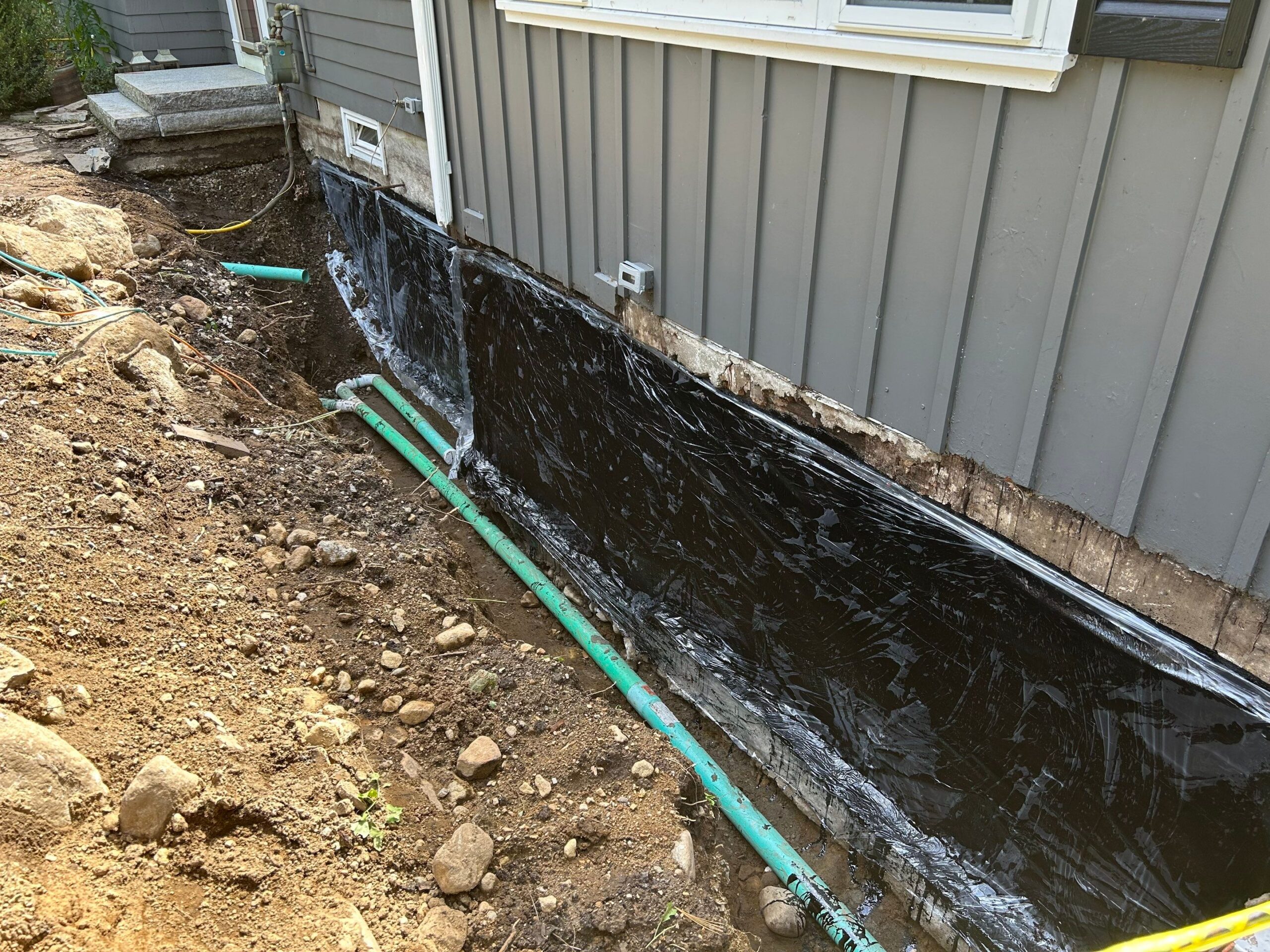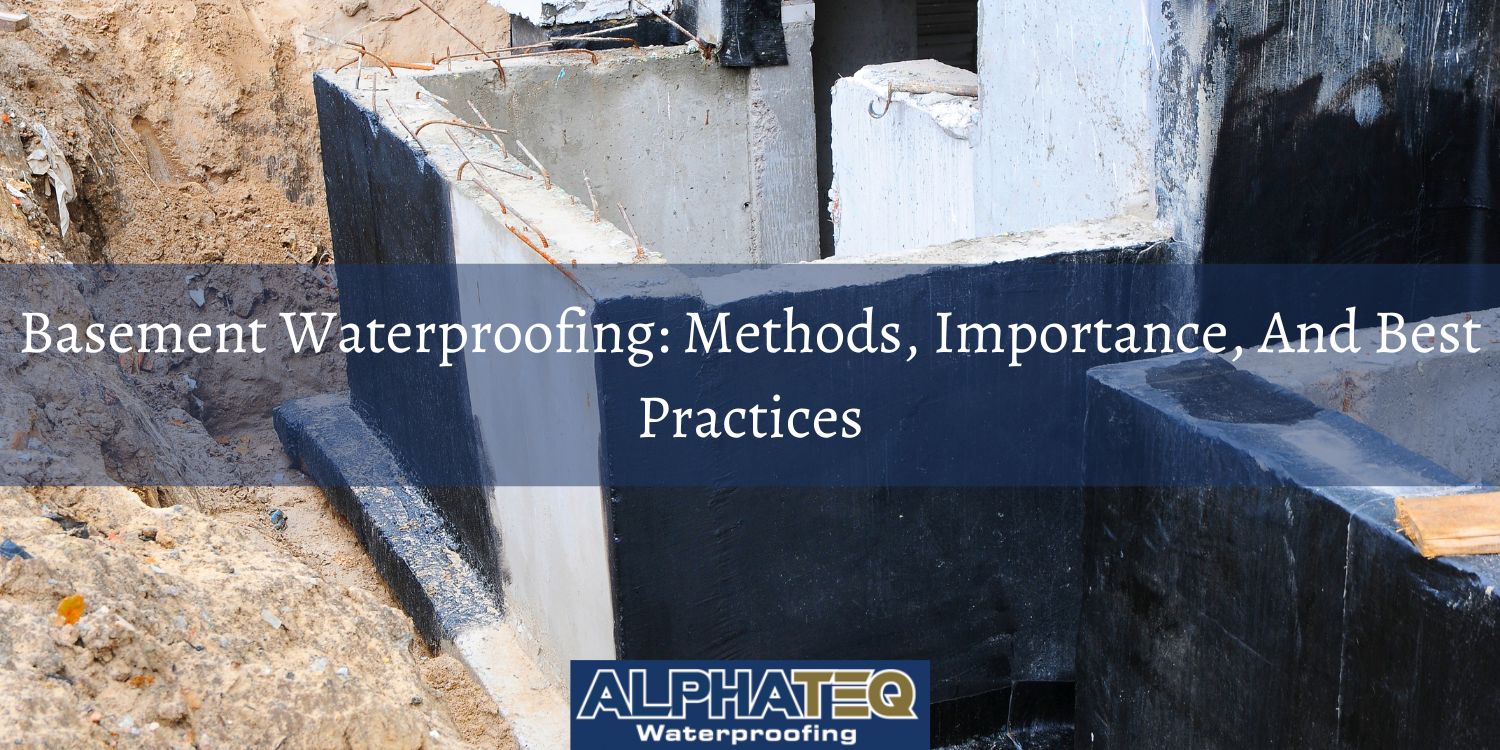Comprehending the Importance of Structure Waterproofing for Long-Lasting Structural Stability
In the world of home upkeep, foundation waterproofing stands as a critical consider guarding architectural integrity. While commonly neglected, the dangers postured by water intrusion can lead to comprehensive and costly damage that weakens the very structure of a building. Comprehending the nuances of waterproofing can reveal exactly how it works as an important protection mechanism against these threats. However, the benefits expand past plain security, influencing aspects such as home value and interior wellness. What techniques efficiently stop such issues, and how does one guarantee the appropriate choices are made? These concerns welcome a deeper exam.
Dangers of Water Intrusion
Water invasion's effect on a framework can be substantial, leading to a host of prospective problems that jeopardize the integrity of a structure's structure. As dampness seeps into the foundation, it can compromise the structural components, resulting in cracks and erosion over time.
Additionally, water breach can add to the wear and tear of structure products. Furthermore, water intrusion frequently leads to boosted humidity levels within the building, which can influence electric systems and other framework.
An additional significant threat linked with water intrusion is dirt instability. Excess dampness can alter the composition of the dirt bordering the structure, causing unequal settling and additional structural damage - Leaky basement Toronto. Promptly addressing water breach is important to maintaining the longevity and security of any building

Advantages of Waterproofing
Executing foundation waterproofing is an essential action in protecting a building from the harmful results of water intrusion. One of the primary benefits of waterproofing is the conservation of architectural honesty. Water seepage can wear down the foundation, leading to fractures, compromising the general structure, and possibly leading to expensive repairs. By producing an obstacle against dampness, waterproofing assists preserve the structure's stamina and toughness over time.
In addition, waterproofing considerably improves interior air top quality. Dampness infiltration can foster mold and mildew and mold development, which not only damages building materials yet likewise presents health threats to owners. An appropriately waterproofed foundation minimizes these dangers, adding to a healthier indoor environment.
Furthermore, waterproofing raises home worth. A well-protected foundation is an attractive attribute for prospective customers, as it indicates proactive maintenance and reduces the possibility of future structural issues. This investment not only safeguards the present state of the home but likewise adds long-lasting worth.
Finally, foundation waterproofing adds to power effectiveness. By avoiding dampness from getting in the building, it assists in maintaining constant indoor temperatures, therefore decreasing the requirement for too much heating or air conditioning and leading to power cost savings.
Common Waterproofing Approaches
When it comes to safeguarding a structure's foundation, picking the suitable waterproofing technique is crucial for reliable protection against wetness intrusion. One of the most usual techniques is the application of fluid waterproofing membrane layers.
Another common method is the installation of sheet membrane layers, which are pre-formed sheets of water-proof product, commonly bitumen or polyvinyl chloride (PVC), that are adhered to the foundation wall surfaces. These sheets offer durable security and are especially efficient in areas with high groundwater levels.
Cementitious waterproofing is another widely-used option, specifically in new buildings. This includes applying a cement-based substance blended with additives to develop a water-proof layer. It is simple to apply and affordable, making it a popular selection for household buildings.

Indications of Foundation Damages
To maintain the integrity of a building's structure, identifying the indicators of possible damages is as essential as picking the proper waterproofing methods. One of the most obvious signs of foundation damages is the appearance of fractures in the wall surfaces, floors, or foundation itself.
Uneven floors are an additional common symptom, generally triggered by the settling or changing of the structure. Home owners might likewise discover windows and doors ending up being difficult to open or shut, indicating possible imbalance as a result of structure movement. Water invasion indicators, such as dampness, mold, or mold in the basement, suggest insufficient waterproofing or water drainage concerns, which can aggravate structure problems.

Selecting the Right Contractor
Picking the best service provider is vital for ensuring effective structure waterproofing tasks. This decision significantly impacts the top quality and durability of the job done, securing your investment and making certain structural integrity. Begin by investigating potential service providers with a tested record in foundation waterproofing. Seek business with considerable experience and a strong profile of successful tasks. Verifying their qualifications is important; guarantee they are licensed, guaranteed, and adhered.
Request recommendations from previous clients to obtain insight into their professionalism and reliability and integrity. In addition, testimonial online ratings and reviews to obtain a more comprehensive understanding of their track record. It is vital to get several price quotes to contrast pricing and scope of work used by each service provider. However, be careful of click here for info quotes that are dramatically lower than others, as this may suggest below average products or handiwork.
Validate their understanding of regional building codes and guidelines to avoid possible compliance concerns. By taking these steps, you can pick a professional that will supply high quality, durable waterproofing options.
Conclusion
Structure waterproofing is necessary for preserving structural integrity and preventing possible damages triggered by water invasion. By executing efficient waterproofing approaches, the dangers of mold and mildew growth, material deterioration, and soil instability are significantly lowered.
In the world of residential property maintenance, foundation waterproofing stands as a crucial aspect in protecting structural honesty.Carrying out structure waterproofing is a critical action in safeguarding a structure from the damaging effects of water breach. One of the most obvious signs of structure damage is the look of cracks in the wall surfaces, floors, or structure itself. Water intrusion indicators, such as moisture, mold and mildew, or mildew in the cellar, visit this page suggest poor waterproofing or drain issues, which can worsen foundation issues.
Foundation waterproofing is necessary for preserving architectural integrity and protecting against prospective damages triggered by water intrusion. - Leaky basement Toronto